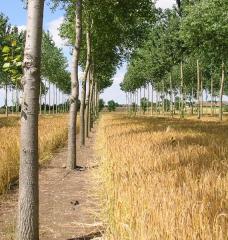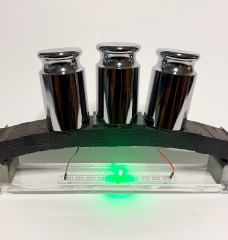
Although it is used to construct some of the world’s largest structures, it turns out that cement actually has something in common with a sponge.
A highly porous material, cement tends to absorb water from precipitation and even ambient humidity. And just as the shape of a sponge changes depending on water saturation, so too does that of cement, according to recent work conducted at MIT.
In a paper published in the Proceedings of the National Academy of Sciences, researchers at the MIT Concrete Sustainability Hub (CSHub), French National Center for Scientific Research (CNRS) and Aix-Marseille University discuss just how the material’s porous network absorbs water and propose how drying permanently rearranges the material and leads to potential structural damage.
But to understand how water can change cement’s pore structure, one must first look at how it contributes to the formation of this very same structure.
Cement paste begins as a dry powder composed of carefully blended ingredients including calcium, iron, aluminum, and silicon. From here, this powder is mixed with a certain proportion of water to form cement paste. This is where the pore network begins to form.
Once the water and the powder mix, they react together and produce compounds known as calcium silicate hydrate (CSH), also known as cement hydrates.
“Cement hydrates are small, on the nanoscale scale,” says Tingtao Zhou, a PhD student in the Department of Physics and the lead author of the paper. “These are the building blocks of cement.”
During cement hydration, the cement hydrate's nanograins aggregate with each other, forming a network that glues all constituents together. While this gives cement its strength, the spaces between the cement hydrates create an extensive pore network in the cement paste.
“You have numerous pores of variable sizes that are interconnected,” describes Zhou. “It becomes very complex. And since they are so small, you don’t even need rain to fill them with water. Even ambient humidity can fill these pores.”
This poses a problem when trying to study the drying of a pore network.
“Let’s say you only have two grains of calcium silicate hydrate; you can imagine there is some water condensation between them,” explains Zhou. “In this case, it is easy to measure the water in the pore space and the pressure of this condensation, which we call capillary pressure. But when you have a massive number of grains the water distribution becomes really complicated — the geometry becomes a mess.”
To deal with water in cement’s messy pore network, Zhou and Katerina Ioannidou, a research scientist with CNRS and the MIT Energy Initiative and a corresponding author of the paper, first wrestled with two issues.
The first was partial saturation. Since the pore network is so complex, water becomes unevenly distributed, which makes it difficult to calculate its distribution.
The second issue is that of multiple scales.
“In the past, researchers would study the movement of water in pores at either the scale of the atom or on the continuum, or visible, scale,” Zhou reports. “This means they lost a lot of information on the mesoscale — which is between the atomistic and continuum scales.”
Over the past decade, Ioannidou, along with researchers Roland Pellenq, Franz-Josef Ulm, Sidney Yip, and Emanuela Del Gado of Georgetown University have all worked to advance the modeling of cement at multiple scales. This recent paper drew upon their work to approach these issues.
Using computational modeling techniques, Zhou and Ioannidou calculated how water distributes within a pore and then determined the force that the water exerted on the pore wall. Once complete, they grouped pores together and simulated the effect of drying on the mesoscale.
After examining the simulations, Zhou and Ioannidou found that the grains had “irreversibly rearranged under mild drying.”
Even though these changes appeared small, they were not necessarily insignificant. “We found irreversible structural changes on the mesoscale,” Zhou notes. “It’s not propagating to a larger scale yet. But what happens when we have many of these drying cycles over many years?”
Though it is too early to know how exactly this kind of structural change affects concrete structures, Zhou hopes to develop a new model to study the long-term consequences of drying.
“In this paper, we have dealt with different spatial scales. But we have yet to deal with different time scales. These changes occur in a period of nanoseconds and we would like to see their influence over the typical lifetime of concrete structures,” he explains.
Still, this computational approach represents a new way to better understand the effects of drying in cement. “In past physical experiments, it is very hard to observe damage on this scale. But computation enables us to simulate this kind of damage,” explains Zhou. “This is the power of computing.”
The MIT Concrete Sustainability Hub (CSHub) is a team of researchers from several departments across MIT working on concrete and infrastructure science, engineering, and economics. Its research is supported by the Portland Cement Association and the Ready Mixed Concrete Research and Education Foundation.






